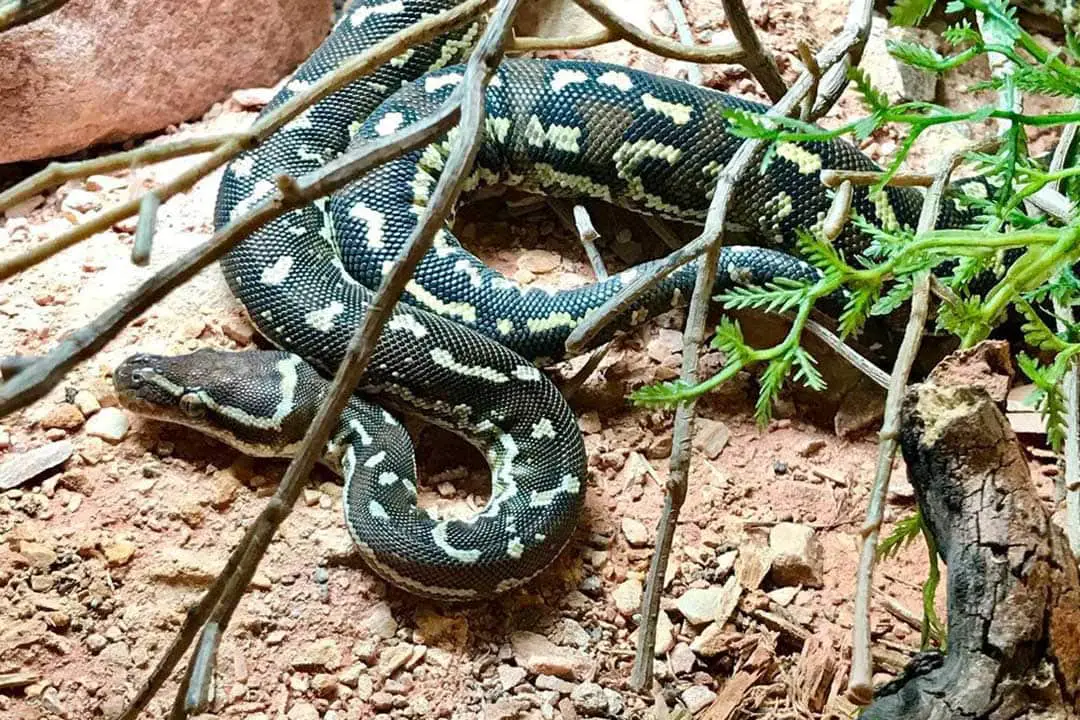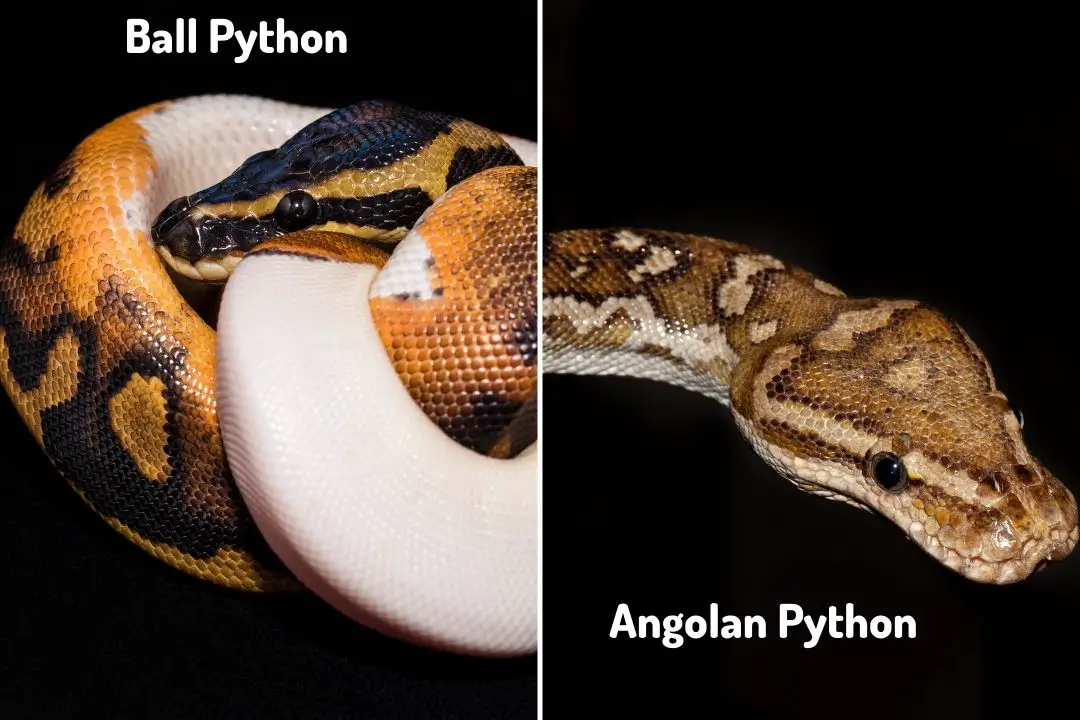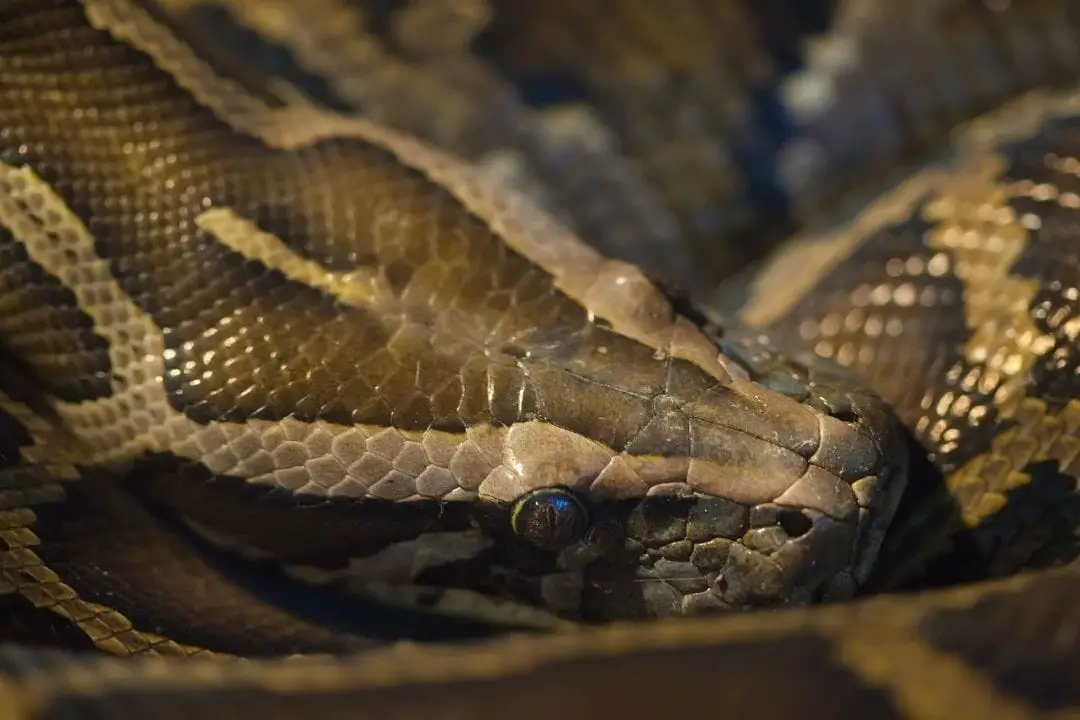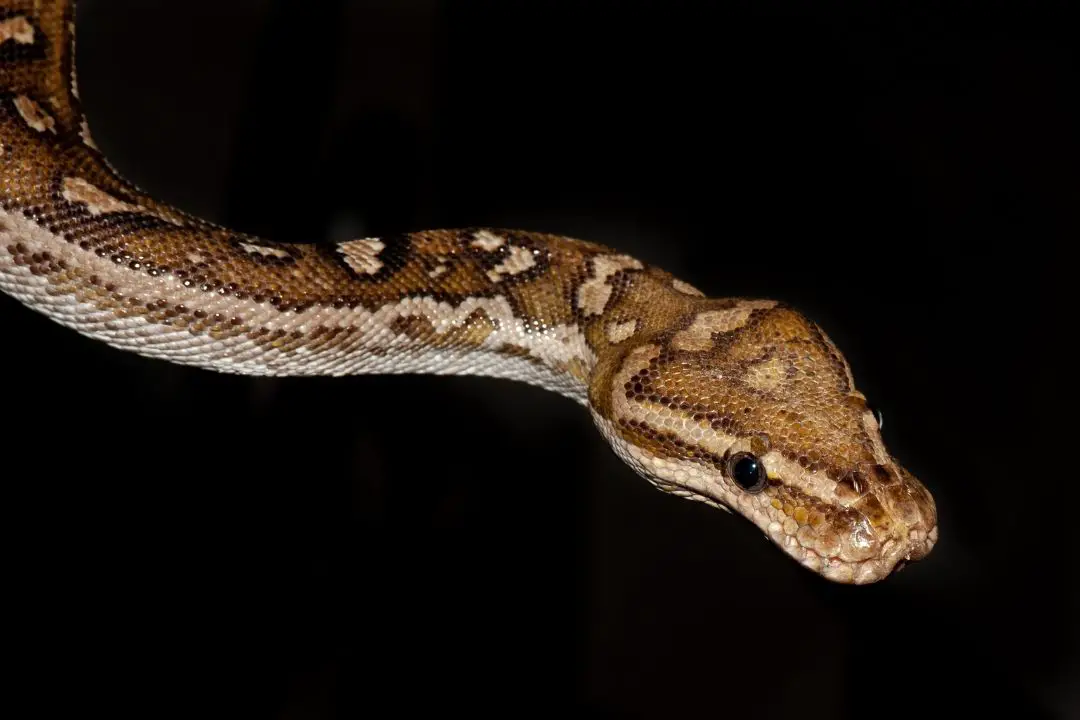The Angolan python (Python anchietae) is a rare African python closely related to the ball python. These snakes with beaded scales are slowly becoming more available as pets.
If you have an Angolan python that isn’t eating, there are a number of reasons why that might be. We will go over a few possible reasons why your snake may be refusing to eat.
If your snake keeps skipping meals, take the python to your reptile vet to make sure it isn’t a health concern.
Here are some of the reasons why your Angolan Python is not eating:
1. Poor Conditions
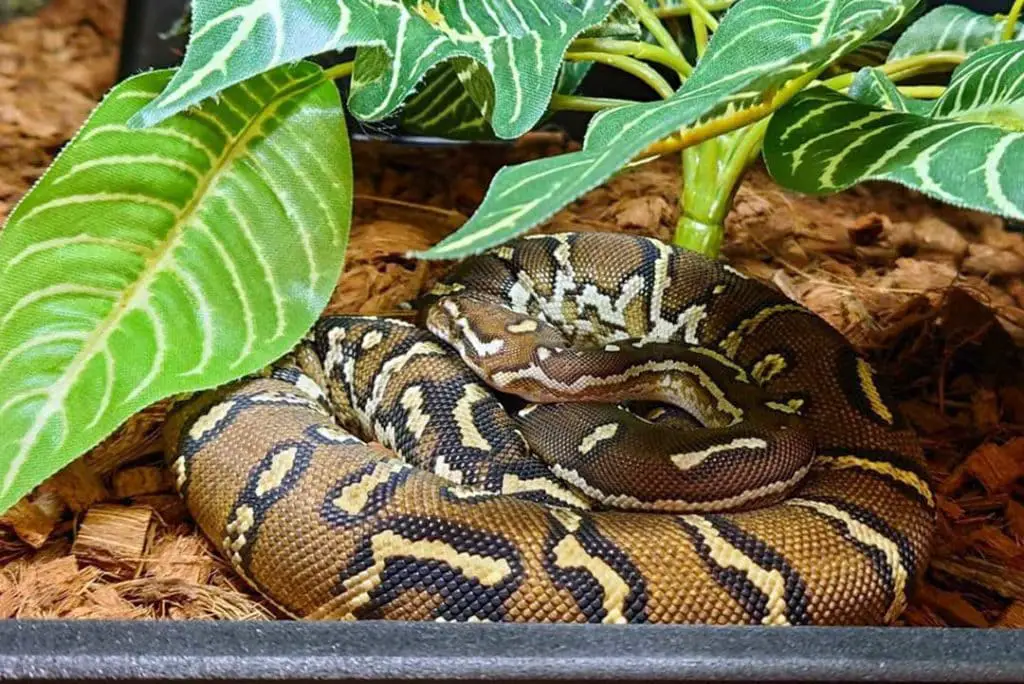
The very first thing you need to check when any snake isn’t eating is your temperatures and humidity. If it is too cold or hot, your snake may refuse to eat.
Watch where your snake tends to stay and check your temperatures with a temperature gun and a reliable digital thermometer. Low humidity can cause dehydration and may leave your snake unwilling to eat.
Check with a digital hygrometer and be sure to offer a humid hide with damp sphagnum moss. You should mist the moss every day to keep it damp but not soaking.
I published a complete care sheet for the Angolan Python, covering everything from enclosure setup to feeding and shedding tips.
2. Stress
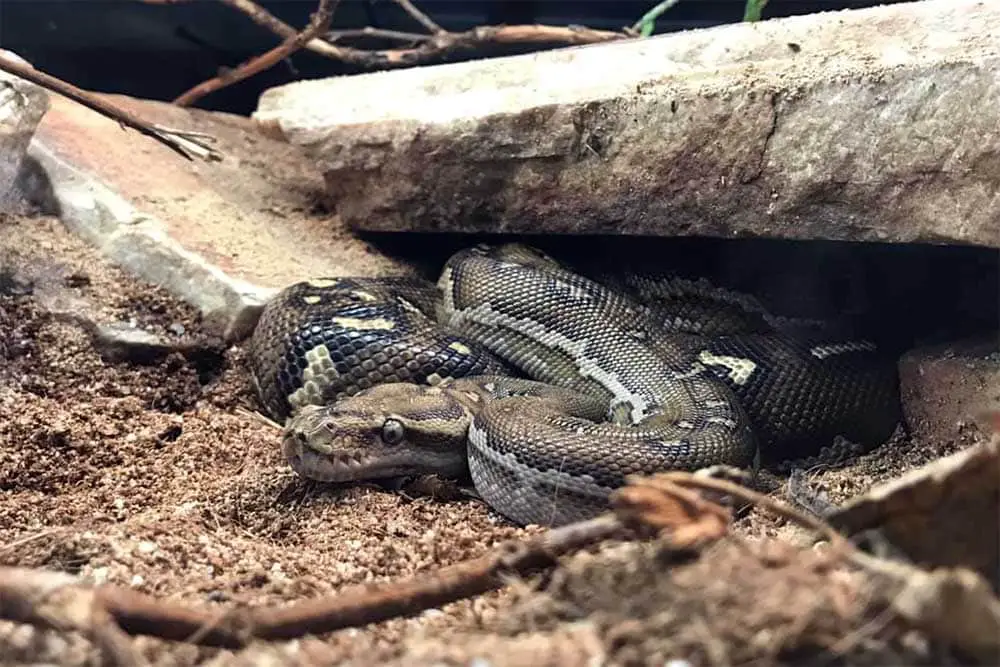
Stress can kill the appetite of many snakes. If you have just gotten your Angolan python, it may take a week or two to settle in before it will take a meal.
Make sure to leave your snake alone during this period. You should only go in the enclosure to replace the water and spot clean any waste.
Once your snake has a chance to settle in, you can try offering a meal. If your Angolan python came from a breeder, they can tell you what the snake was eating. Offering the same prey is the best way to get a new snake to eat.
Angolan pythons can also be stressed out by frequent handling, other animals in your household, loud sounds, and activity near the enclosure.
Try to position the enclosure in a quiet room and keep pets and children away from the enclosure. You should also not listen to loud music near the enclosure since this can stress out your python.
Give your snake a quiet week without handling before offering another meal.
3. Improper Prey
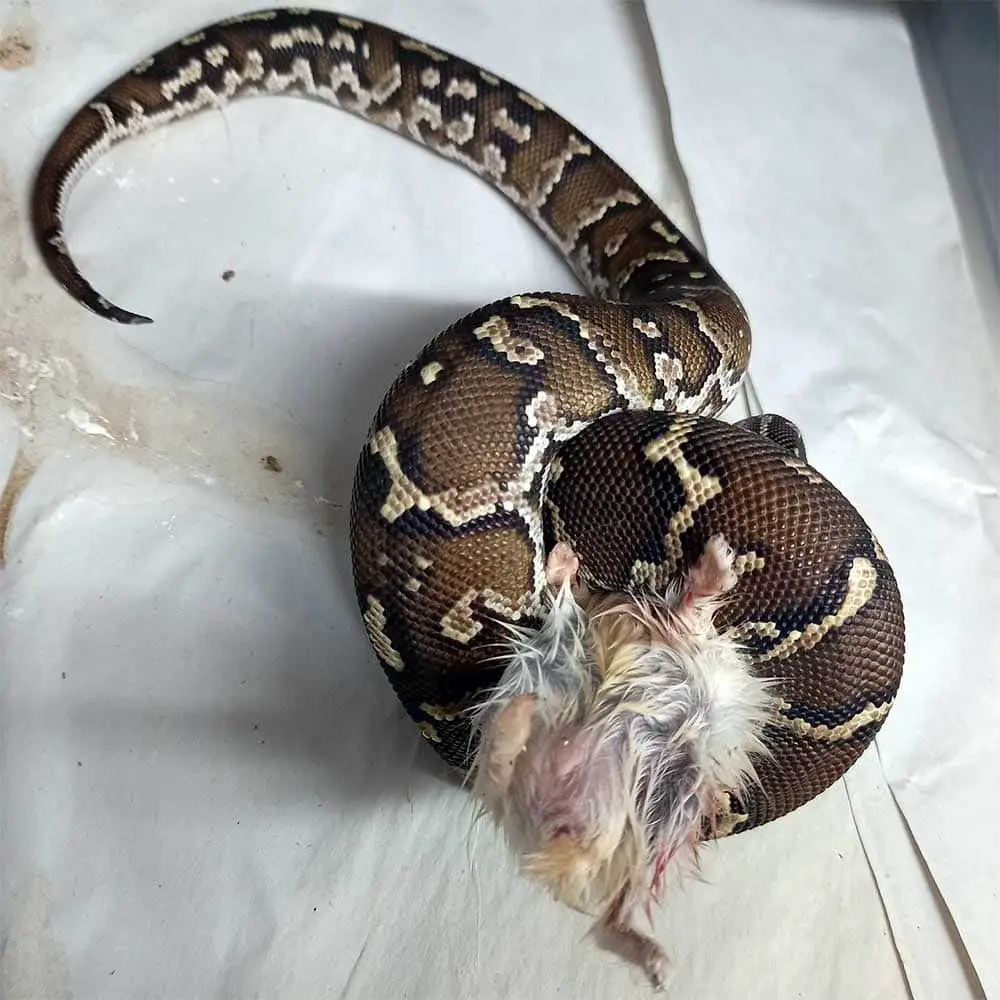
Offering prey your snake doesn’t like or recognize as food can put many pythons off their food. Snakes will get in a habit of only eating and accepting one type of prey.
If the snake is only used to live white mice, it may refuse a rat, frozen mouse, or a different color. A wild-caught snake will also likely not recognize a white mouse or rat as food.
You can try a different color of prey to see if your snake will take it.
Some picky African pythons will take an African soft-furred rat over a typical feeder rat. They can be slightly harder to find for sale, but it is easier than other prey types your snake may be familiar with.
4. Parasites
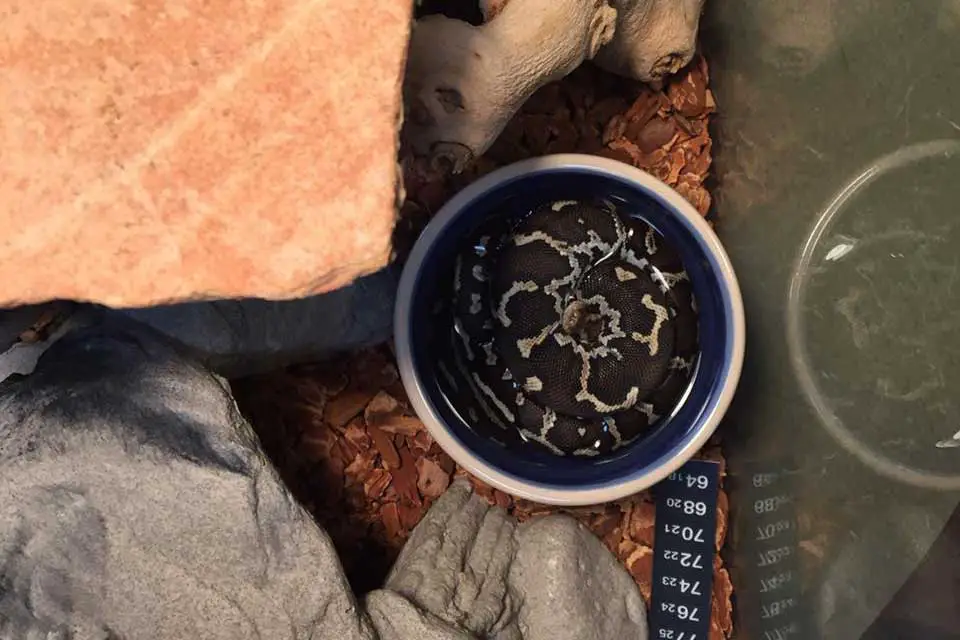
Parasites are a major problem for any snake. Mites and ticks can weaken a snake or transmit illnesses that can cause a lack of appetite. Ticks are obvious, but mites look like black specs and are about the size of a poppy seed.
Infested snakes may soak in their water dish to try to kill the parasites, so check the water for any drowned mites and ticks. Internal parasites can seriously harm your Angolan python.
Have your snake checked for parasites when you get them. A fecal test is the fastest way to diagnose most parasites. Wild-caught snakes frequently have heavy parasite loads so you should have a new snake tested as soon as you get it.
However, even captive-bred animals can have parasites. Always quarantine a new snake and have it tested early to catch parasites quickly.
5. Disease
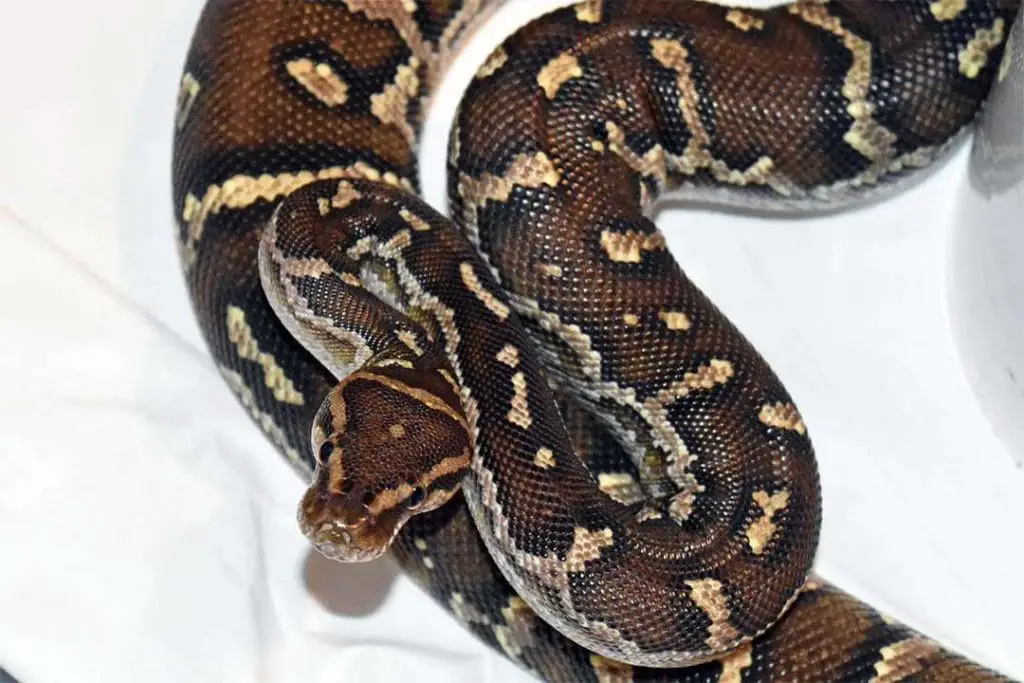
It is not known precisely what diseases that Angolan pythons are susceptible to. Infections of the mouth and respiratory systems can cause a loss of appetite.
Since mouth infections are painful, your snake will not want to eat. Look for inflammation, pus, blood, and excess mucus. A reptile vet can treat a mouth infection quickly.
A respiratory infection can make breathing difficult for your snake and it can kill quickly. Listen for any sounds like wheezing or clicking when your snake breathes.
You may see mucus leaving the nostrils or see your snake breathing with the mouth open. You may see excess mucus in the mouth or pus and blood in the mouth.
If you see any signs you need to take your Angolan python in immediately since by the time you see signs your snake is very sick.
Many other diseases also present with a loss of appetite as the most obvious symptom. A check-up can help make sure your snake is healthy. It is better to be safe than sorry since these snakes are very rare and little is known about how to keep them healthy in the long term. Any major weight loss in a snake should result in a vet visit.
6. Shedding and Life Cycle
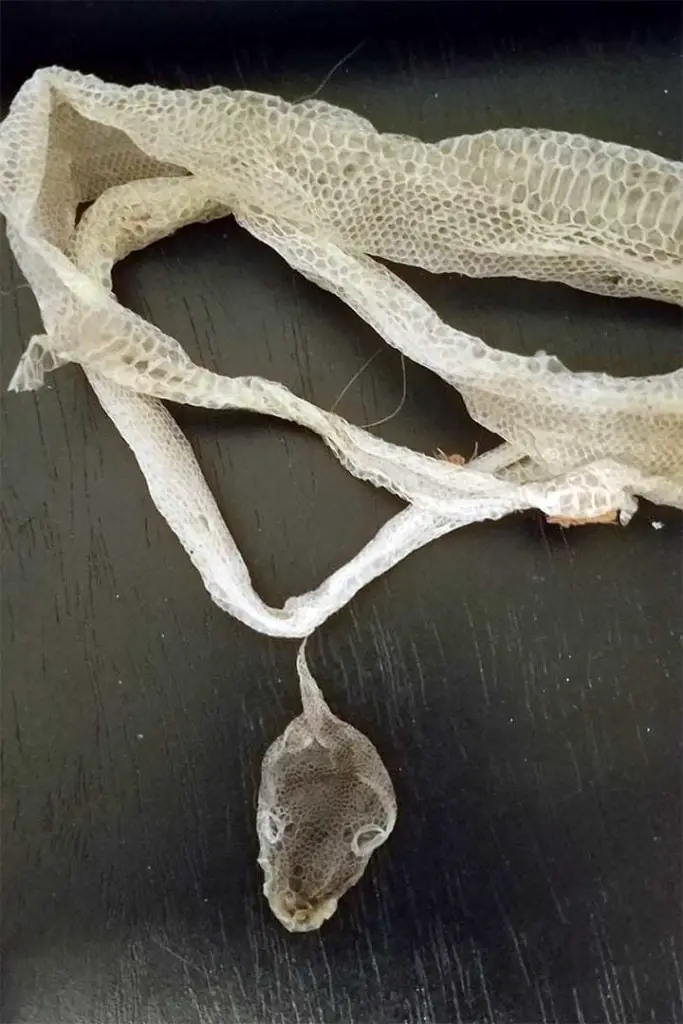
The final set of causes all relate to the natural life cycle of snakes. An Angolan python that is getting ready to shed will likely refuse to eat.
Look for cloudy eyes and a dulling of the color of your pet. Your snake should be willing to have a meal again after a successful shed.
Snakes that are getting ready to breed may also refuse to eat. While the reproductive cycle of Angolan pythons is not well understood, many male pythons refuse to eat while they look for a female to breed with. Females that are ovulating may refuse a large meal.
Females that are about to lay eggs will also stop eating.
She may refuse to eat until her eggs hatch or are taken away. Some pythons will also be less interested in food during the winter.
Even if you keep your temperatures fairly stable, your snake may react to lower light levels and slightly lower temperatures in the room by losing its appetite.
Watch for any major weight loss and take your snake in if you suspect it may not just be a seasonal change.
Conclusion
Angolan pythons may refuse to eat for many reasons. If you are worried, always head to your vet early.
If you have any questions or experience with this species, please leave a comment below.
